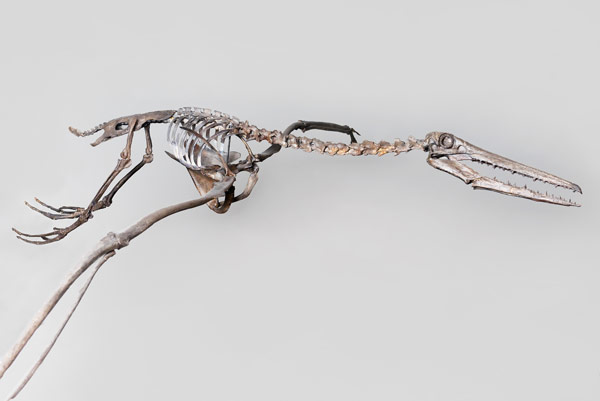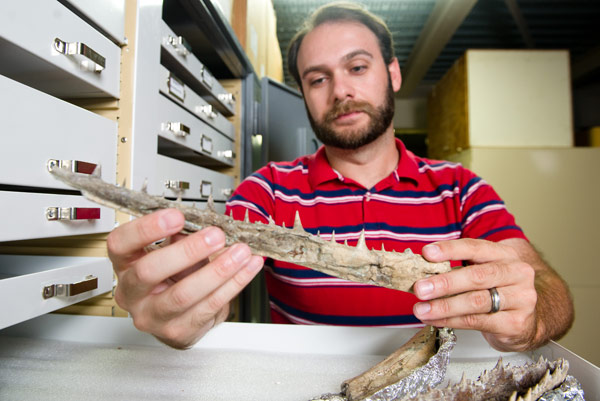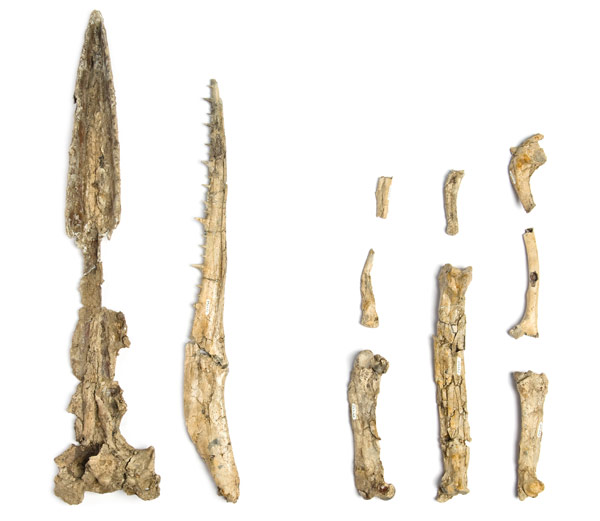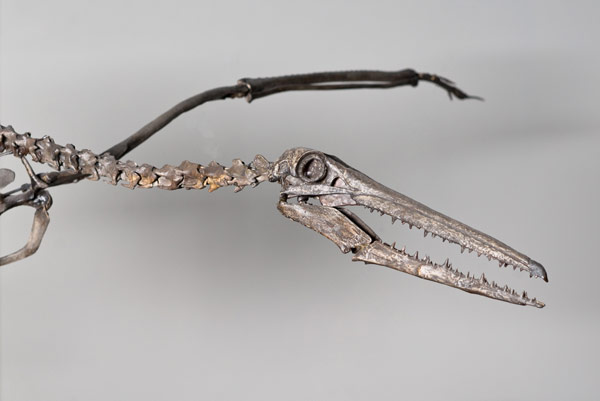The Largest Flying Seabird in the World
The publication of paleontologist Daniel Ksepka’s paper, Flight Performance of the Largest Volant Bird, which was released just this month, has created a lot of buzz worldwide. Everyone has been talking about the incredible, now extinct animal with such outlets as CNN, FOX News, NBC News, BBC, National Geographic, and The Washington Post posting articles about the finding as well as the research results of the Pelagornis sandersi.
Dr. Ksepka first became interested in this topic of research after being invited to study fossils at The Charleston Museum in 2010. This is the only fossil of it’s kind in the world and it can be found here at The Charleston Museum. Dr. Ksepka notes “It was a surprise to see that the giant pelagornithid was hiding out in the collections, and I was eager to figure out whether it was a new species because the jaw was very different from other species that I had seen in museums (more slender, and holding more bony ‘pseudo-teeth’). Sure enough, it turned out not only to be an undescribed species, but to have the largest wingspan of any known bird.”
Matthew Gibson, The Charleston Museum’s Curator of Natural History, adds “the recent description of Pelagornis sandersi is an extremely exciting development in the scientific community. P. sandersi, possessing a wingspan of roughly 6.4 meters (roughly 20 – 24 feet with the feathers included) in length, represents the largest known volant bird. This dwarfs the largest living bird, the Royal Albatross, which possesses a wingspan of roughly 3.5 meters. Due to its immense wingspan, P. sandersi was likely not capable of launching itself into the air as many modern birds do, but rather would make a running take off similar to how small aircraft take flight.
This new species is incredibly significant in that it breaks the previously thought limit on avian (bird) wingspan of roughly 5.1 meters. Before the description of P. sandersi, it was thought that birds would be physically unable to flap such large wings to say aloft. Computer models suggest that it is highly likely that P. sandersi could flap its wings to an extent, and also primarily glided on air currents coming off the ocean similar to the albatross. This false-toothed bird, which lived in the late Oligocene (25 – 28 million years ago) probably snared fish swimming near the surface and was most likely incapable of taking off from the water.” A partial fossil skeleton of this species was found near the Charleston Airport in 1983 and is now in the collections of The Charleston Museum.
A cast replica of P. sandersi is currently on display in the Museum’s Natural History gallery. Dr. Ksepka is scheduled to speak on his research and the Pelagornis sandersi here at The Charleston Museum in 2015.





